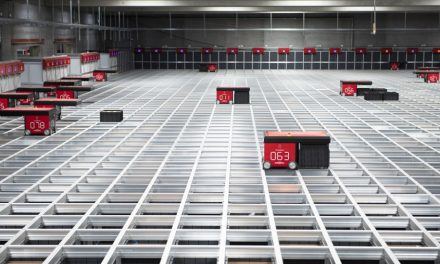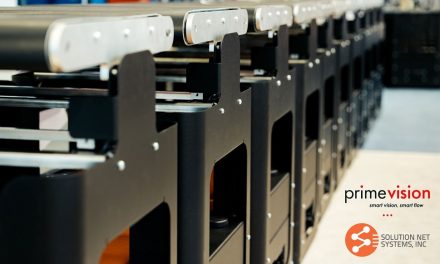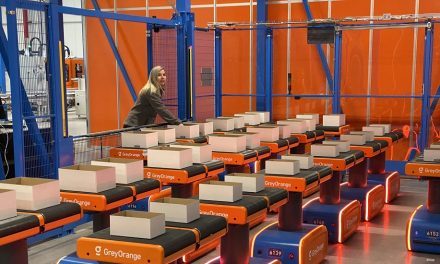
The development of processing automation at Correios Brazil
Odarci Roque de Maia Jr., MSc, Former Project Manager Letter Sorting Systems.
World Mail Review November 2008 EARLY DEVELOPMENTS
Official postal activity in Brazil commenced at the end of the 17th century, when the Portuguese Crown installed the Correio-Mor, which was responsible for postal exchanges between Portugal and its colony in South America. The postal service subsequently went through several administrative changes, culminating in the creation of the Empresa Brasileira de Correios e Telégrafos (ECT) in March 1969. The ECT, or Correios as it is popularly known, was set up as a public company with the aim of improving the efficiency of postal services throughout Brazil, a country only slightly smaller than the USA and with a population of around 170m.
Correios now has more than 108,000 employees, of which about 53,000 are mailmen. Its infrastructure includes more than 13,000 points of sale and in excess of 1000 sorting and distribution centres. Daily about 35m items are delivered, utilising almost 6,000 vehicles, 17 airlines, boats and bicycles. There are approximately 50m delivery points, in some 10,000 localities in 27 states.
The history of automated mail sorting in Brazil commenced in the 1940’s, when the first generation of sorting machines, built in Holland, was installed in the General Post Office in Rio de Janeiro. The equipment used a mechanical system for letter selection invented in 1927, with letters marked by a red ink stamp in accordance with their destination. This system was extended to Sao Paulo in the 1950’s.
The introduction of the second generation of equipment, for facing and cancelling letters, occurred in 1972, with the inauguration of a system manufactured by AEG Telefunken in São Paulo.
AUTOMATION IN THE 1970’s
With the expansion of mail volumes, the acquisition of the third generation of sorting systems commenced in 1976. This project involved 3 parcels and small bag sorting systems and 8 letter sorting systems.
The 3 parcels and small bag sorting systems were acquired from Daifuku Machinery Works /Toshiba, and were installed in Brasilia, São Paulo and Rio de Janeiro. They operated until the end of the 1990’s, with the exception of the equipment in Brasilia, which was utilised until 2004.
The 8 letter sorting systems were supplied by NEC. Each one comprised a culler, facer and cancelling module (CFC), a 24-stacker pre-sorting machine (PSM) equipped with reader electronics, and a 200-bin final sorter (LSM), as well as coding desks. The systems were equipped with OCR and able to identify the Brazilian Postal Code (CEP), then with 5 numeric digits, whether machine printed or handwritten. The first system was installed in Brasilia in 1978, followed by 3 systems in São Paulo in 1979. 3 further systems were installed in Rio de Janeiro in 1980. All equipment operated until the late 1990’s.
DEVELOPMENTS IN THE 1990’s
The continued increase in volumes, as well as the necessity to incorporate new technologies, led the Correios in 1992 to initiate an international bid for the acquisition of new sorting systems. Subsequently 3 contracts were signed in 1997. The first one was with AEG Electrocom (nowadays Siemens AG), for the supply of 16 letter sorting systems. The second contract was with Crisplant A/S (today FKI Logistex) for the supply of 8 parcel sorting systems. The third contract, with a consortium of Cegelec & Alcatel (nowadays Solystic), foresaw the supply of 10 flat sorting systems. A contract was also signed with Marubeni & NEC to upgrade the 8 NEC letter sorting systems acquired at the end of the 1970’s. In 1995 a government strategic plan envisaged the further expansion of automation. As a result three new international bids were initiated at the end of 1996 for the acquisition, including international financing, of sorting systems for letters, flats, and parcels. Other tenders were issued for materials handling equipment (MHS), and for support systems such as the National Address Directory (DNE) and the National Statistical System (SNG). All the bids provided for the supply of spare parts kits, and operational and maintenance training programmes, as well as full local maintenance and technical support for the first year of operation of the equipment. The supply contracts were signed in 1997 and the financing contracts in 2000. Successful bidders included AEG for some 30 pieces of equipment for sites at Porto Alegre, Curitiba and Belo Horizonte. Crisplant was contracted for 6 parcel sorting systems for sites at Belo Horizonte, Campinas, Porto Alegre and São Paulo. Marubeni & NEC were responsible for a lot including 16 letter sorting systems and the development of the National Address Directory (DNE) and of the National Statistical System (SNG). These two corporate systems were developed by Oracle Brasil as a subcontractor of NEC. The supply of quality control systems (QTS) kits was also contracted to AEG Electrocom and Marubeni / NEC.
In 2001, an additional materials handling system (MHS) was contracted to Siemens Brasil Ltda. for a site at Rio de Janeiro.
Correios Adds Its Own Innovations
Specialists from Correios designed a system to remove the need to stick postal code labels on parcels as well as to reduce postal code keying. Sorting is carried out based on the reading of the track & tracing labels, with the destination post code being retrieved from special servers attached to the sorter. In 2004 the Brazilian company Seal was contracted to integrate this system into the parcel sorting equipment.
Brazilian customers may print on their standard and flat letters a barcode called Cepnet with the destination CEP. This barcode, based on the Postnet, is used by Correios with a special permit fom USPS. Letter production procedures are made available to mailers as well as to individual customers in order to help them in the correct design of letters, use of barcodes and correct address data bases. In partnership with Microsoft and Pimaco, a macro for MS-Office applications was developed for address label production including the Cepnet processing.
The ID-Tag and Destination barcodes printed by the standard and flat letter sorting machines after the OCR processing, which were developed by Correios in cooperation with the University of Brasilia, are a variation of the 4-state barcode, including high redundancy capability. This barcode, called SB4ECT, has been implemented on all letter sorting systems.
In 1997 Correios designed a new method which allows automated letter sorting based on the ID-Tag information. With this innovative feature there is no necessity to reprocess a letter in order to print a new barcode, with the postal code resolved by the offline process (OCR and video coding).
Looking To The Future
The programme to date has been implemented as a result of intense work by a multidisciplinary team including Technology, Operations, Finance, Human Resources and Commercial. This team was initially coordinated by the Director of Technology and, after 2001, by the CEO, under the acronym PCAUT. The PCAUT programme ended in December 2006.
All equipment has been distributed and installed in 19 operational units of ECT, in 14 cities in 9 states. The total investment is about R$1.1bn, or more than US$ 600m, excluding costs related to renovation and building of some sorting centres.
A task group is currently planning the next phase of sorting automation. Its report, to be submitted to the Board, will consider new features and technologies such as RFID, Centralised Address Reading Platform, computational platform upgrade, and mixed products sorting equipment.












